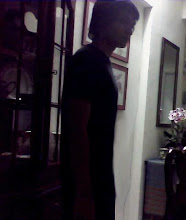We've finally come down to our last blog entry...
Over the semester, the class has proved itself to be not only knowledgeable, but fun as well. Although tedious, Robotics has thought all of us the skills needed to plan, construct and program - we tend to explore new things and reach new heights within each class.
Throughout the semester, we've learned how to construct robots. We've learned that constructing a robot is harder than what one would think - it needs knowledge and reason of both the situation and surrounding the robot is in. Building a model that is suitable for the task at hand is the key to solving it. The position of sensors on a robot plays a significant role in the robot's performance, thus, considerations need to be made - by placing sensors at places that are most suitable for the task could easily serve as an advantage. Gear configuration is also significant to its performance as it controls the robot's "torque" - having a gear ratio that is a greater factor to the other gives a robot speed, while a ratio that is a lesser factor to the other gives a robot strength or power. Modular construction too is significant as it makes the robot "universally able".
What is a robot without a program? Nothing. We've explored the NXT programming software down until its "gut". We've learned how to easily program our robots to complete task that were given to us. Some of the common blocks we used were motor and wait blocks - they were like the very first step in learning how to program. We were forced to use other unique blocks due to increase of difficulty with each passing activity. One of my favorite blocks of course, is the switch block. The switch block enables the robot to think and decide based on either logic or sense.
In each kit we were given all kinds of sensors. Light, ultrasonic, touch, and sound; all were used, none were wasted. Without sensors, robots are not able to basically "sense". Sensors are significant to a robot's arsenal - each sensor had its own configurations and in order to make it sense what we wanted it to sense, we had to explore the settings. Overall, after all the programming and constructing, sensors are the eyes, hands, and ears of the robot.
In conclusion, Robotics has deepened our understanding of maths, science and technology through the constant contact with calculations and physics that were involved in this semester's class. We have also improved our reasoning, communication and collaboration with each passing challenge as it forced us to share ideas and think beyond what we usually know.
Final Class Blog
-
Robotics has come to an end after a semester of hard work and programming.
I have learned many new things such as robot construction, programming the
NXT, ...
16 years ago











